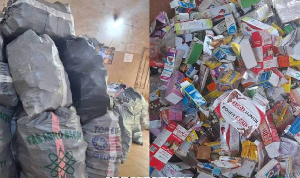Infos Business of Friday, 29 November 2013
Source: Cameroon Tribune
Telefood 2013 Campaign Raises FCFA 68 Million for Agric Production
Projects by women and youths to transform local foodstuffs will receive support.
All hands were on deck on November 27 at the Sawa Hotel in Douala to finance the backbone of the country's economy-- agriculture. Entrepreneurs and generous individuals from all walks of life have collectively mobilised FCFA 68 million to enhance agriculture production and processing within the United Nations Food and Agriculture Organisation (FAO) fundraising campaign called, "TeleFood."
Though other contributions continue to flood in after November 27, the expectation was to raise FCFA 200 million higher than the FCFA 87 million last year so that more projects can be assisted. "Already, 108 small farms and micro projects for the production of pork, chicken, fish and vegetables, among others, have been financed," Agriculture and Rural Development Minister, Essimi Menye, disclosed during a gala night organised to that effect at the Sawa Hotel in Bonanjo.
TeleFood is FAO's annual campaign of live broadcasts, gala night and other events aimed at raising awareness about world hunger and mobilising resources for hunger-fighting projects. The campaign centres around the observance of World Food Day, marking the founding of the FAO on October 16, 1945.
Minister Delegate at the Ministry of Agriculture and Rural Development, in charge of Rural development, Clementine Ananga Messina, thanked the FAO initiative organised in collaboration with the government to raise awareness about hunger and mobilise resources for hunger-fighting projects. She said since its inception in 1997, the TeleFood initiative has enriched the lives of many people in Cameroon. By financing grassroots-level micro projects the TeleFood Special Fund helps families and small-scale farmer communities produce more food and generate cash income, for better access to food.
Money raised is entirely channeled to farmers by FAO. Essimi Menye said priority will be given to projects by agric graduates, especially production and processing. Some examples he cited include processing of cassava, corn, potato into flour for bread, and cocoa, etc, expected to take current agriculture into second generation.












